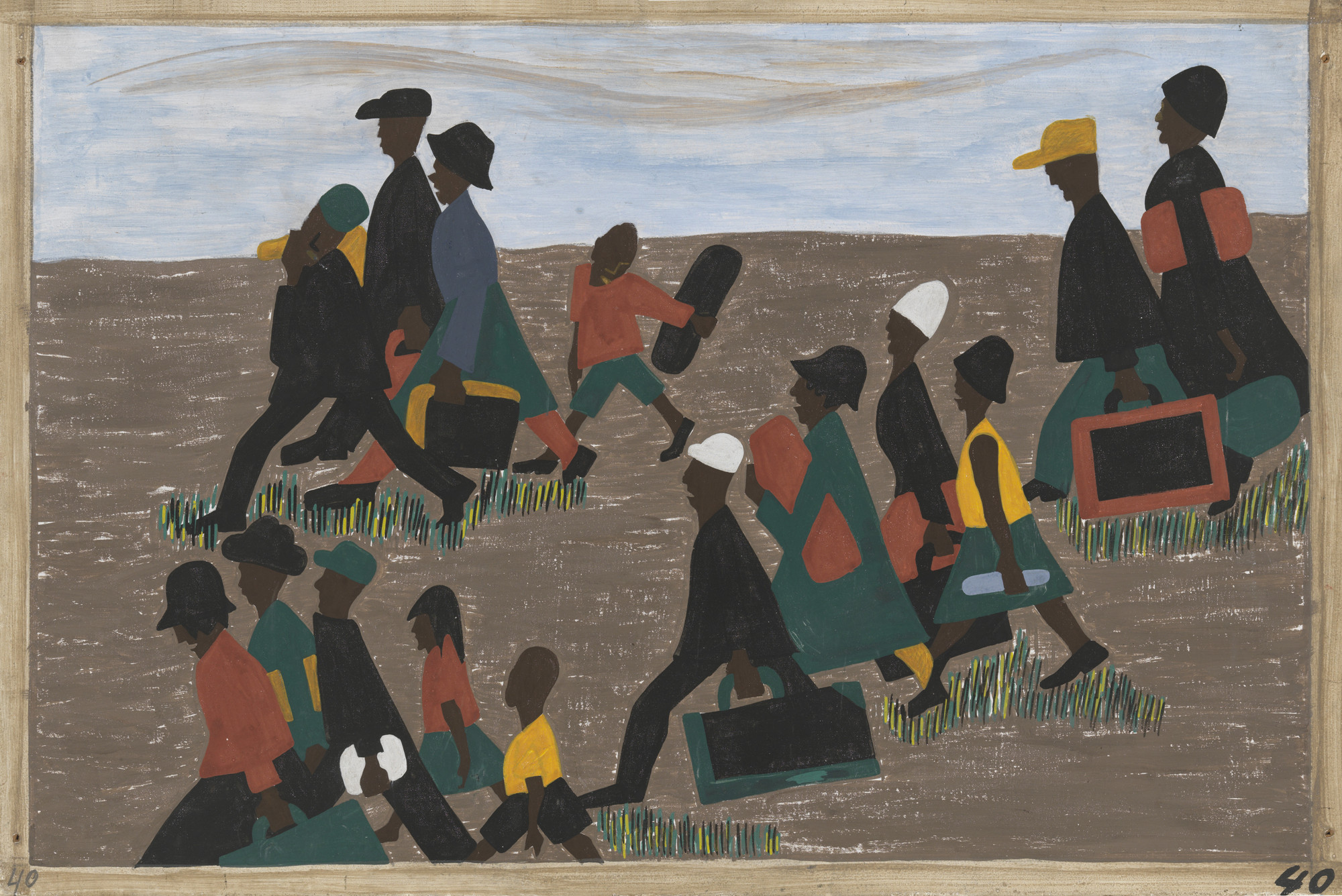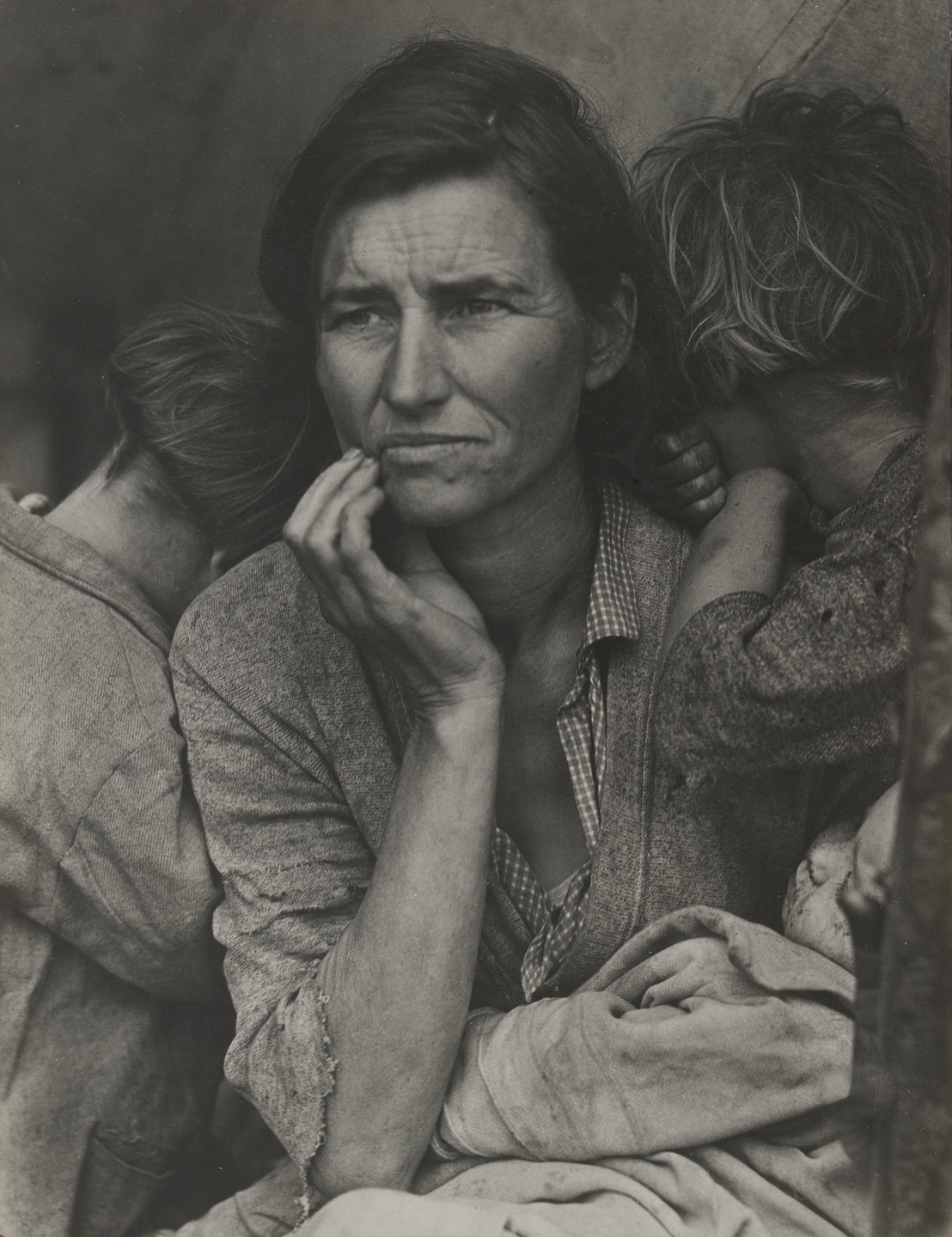Heavily Influenced by History the Early Modern Art Era
Early Modern Art consists of the time around the early 20th century. The early 19th century has many turning points but in this early modern period, it ranges from World War 1 and 2, the rise of Fascism, the Great Depression, and scientific discoveries. Yet, one of the more notable ones is the Great Depression. The Great Depression which is a severe worldwide economic depression found its beginnings in 1929 in the United States and eventually around the world. In October of 1929, the 'Stock Market Crash' at the New York Stock Exchange sent the economy plummeting. The causes of low wages, the proliferation of debt, the struggling agricultural sector, and excess of bank loans that we're unable to be liquidated formally created one of the biggest societal shifts in the 1930s. It is to say without a doubt that people, places, and of course art changed during this period. The reflections of artists' day-to-day can be visually reflected in the variety of pieces. The devastation of job loss, homelessness, housing prices falling, deflation soaring, and international trade collapsing are all indicative of poor living standards. The hunger and hardship that people faced as seen in many of the photos of the time, but also by the artwork of the Early Modern art period. A few artists stood out to me including Jacob Lawrence, Dorothea Lange, and Thomas Hart Benton.
Depression Era Early Modern Art
Beginning with Jacob Lawrence who himself is a quintessential artist of the Harlem Renaissance I present his piece "The migrants arrived in great numbers" painted in 1940 as a part of thirty paintings as a part of the 'Migration' series currently hosted by MoMA (Museum of Modern Art). Lawrence completed the whole series 'Migration' all while in New York City as a recounting of the epic tale of extreme hardship and injustice that African American's at the time were facing. The 'Great Migration' which is a movement of 6 million African Americans from the rural Southern United States to the urban Northeast takes place before and after the 'Great Depression. The movement of African Americans who built a new life elsewhere is evermore present in Lawrence's connection and extensive research on the effects of the Great Depression and need by industries for new hires. Take a look here at Lawrence's piece:
 | ||
| Jacob Lawrence 'The migrants arrived in great numbers' (1940-41) Source: https://www.moma.org/collection/works/78539?artist_id=3418&page=1&sov_referrer=artist |
Carefully note that Lawrence depicts the migrants uprooting their lives in search of new opportunities and a completely new home is never easy. It is seen in Lawrence's piece a snapshot at the families packing their bags, wearing whatever they have, and moving forward to the left. A somber moment and often difficult by memory as Lawrence attempts to share is contrasted by the vivid colors. The artistic elements of green, yellow, orange and white are all brightening the mood with their vivid colors. The patterns of the grass, ground, and sky are all fluid in their movement just like the people stepping one foot at a time forwards. Considering this piece and the artistic elements of the colors, patterns, and movement that Lawrence provides I briefly or temporally feel the challenge. As a reminder that Lawrence so eloquently provides in his work, it is not just an art piece to be displayed. He is taking a dual role of being the educator and the artist teaching us to recognize the beauty of the moment that they were moving on, but the sadness of the uprooting of their lives due to injustices. The Great Depression has many similar moments for a variety of people in a variety of ways. Lawrence reminds us to recognize both the discomfort and the excitement for the road ahead. Lawrence as a part of both the Great Migration and the Great Depression is an artist who transcends both periods of artistic formations and artistic expressions.
Continuing onward to further early Modern Art relating to the Great Depression, one cannot delineate the Great Depression without noting Dorothea Lange's photos that so in their essence portray and documented the depression era's need for aid. Lange like many other artists during the Great Depression were artists who were supported by the Farm Security Administration or the Resettlement Administration both 'Depression-era' government agencies funding and formed to raise public awareness and provide aid to struggling people. Lange's work was for her a momentary encounter of a hungry and desperate mother named Florence Owens Thompson and her seven children. Thompson's face would go on to be popularized like almost a Madonna-like icon of the Great Depression. The piece titled 'Migrant Mother, Nipomo, California' was documented in March 1936 at a pea-picker camp in Nipomo, California.
 |
| Dorothea Lange 'Migrant Mother, Nipomo, California' March 1936 Source: https://www.moma.org/collection/works/50989 |
One can note from this piece its significance goes far beyond the familiarity and semblance to the Great Depression. Lange documents this moment as an encounter with a mother and her children. The struggle they faced with being hungry, Lange recalls as described by the MoMA as the family lived on frozen vegetables from the fields and birds that the children killed. One can see from this exposure photograph the mother exhausted, concerned, and tired is surrounded by her children who look away. The artistic element of this photo is the universal sense of the familial bond depicted, the strength of family to overcome tough times serves its purpose for hope. The faded fabric, dusted, and old shows the struggles they go through which is even more relevant with the black and white exposure photography method. It is almost metaphorical in ways that the mother the centerpiece both with beauty and strength holds everything together with her children on her shoulders, her shoulders with weight, and everything else happening with the Great Depression. Lange's work is essential in that it shows something far beyond just photography, but rather a persuasion of people to improve the lives of oneself and others.
Finally, the last artist from the early Modern era is that of another essential Depression-era artist Thomas Hart Benton. Benton was notably supported by the New Deal initiated by Franklin D. Roosevelt namely the Workers Progress Administration. The Workers Progress Administration shortened for WPA was to create murals in public spaces that inspired society. Artists like Benton and others under the WPA were focused on revitalizing society following the Great Depression. By depicting and documenting a certain point in time they are also able to show the potential successes and positive future-thinking of America broadly. Benton was a WPA-era artist who found meaning in ordinary Americans and celebrating the democratization of art as a part of everyday cultural life.
 |
| Thomas Hart Benton 'America Today' - 'Coal scene' Source: https://www.nytimes.com/2014/10/03/arts/thomas-hart-bentons-america-today-mural-at-the-met.html |
Benton's presentation of 'America Today' couldn't be a more fitting Great Depression-era and early Modern Art of the 20th century. By ushering in a new artistic expression inspired by the European avant-garde and regionalist style depicted by rural American Midwestern life paintings. Benton pushes the envelope with this powerful mural painting as a part of a series of 10 panels that are a part of a whole piece. Benton uses the American spirit in his paintings as both an inspiration and a reality of check of where the world and the American people need to head towards. Following the tragedies of the Great Depression, it was time for the workers of America to unite and begin to get to work again. Similar to Lawrence, Benton is both an educator and an artist. By depicting history in the making through social and environmental imagery. Benton uses unique artistic elements of an almost cinematic sense like a flickering reel. America is from Benton's view industrial capable, hardworking, and down-to-earth. The exaggerated movements of the worker show willingness. The industrial harbor depicted exemplifies a composition of a landscape. From the fields to the harbor workers across America are working it out slumping back and getting it done. The almost peach color of the buildings and the worker's cloth, the rising backdrop, and coal carts are all indicative of various color schemes. The most unique part of the painting is its fluidity from the harbor to the worker to the buildings on the hill, it all comes together. If one sees the image below you can see the whole scale of the painting and its story that it tells. Benton's work is a long road that one decides to walk down in hopes of finding a better future. The WPA had successfully engaged artists like Benton to create murals that inspire and awe at what America is and can be following the Great Depression.
 |
| Thomas Hart Benton 'America Today' Source: https://www.nytimes.com/2014/10/03/arts/thomas-hart-bentons-america-today-mural-at-the-met.html |
Of all the art presented today, each inspires me to wonder about life during the Great Depression. It makes me become more retrospective of the current life that I have. The current COVID pandemic times. It begins to allow me to consider a world of artistic expression today with COVID and what I could create. Of course, it would take me considerable time to emulate artists like Benton or Lawrence, but similarly with Lange what images have I taken as photographs. I enjoyed all the forms of early Modern art and the significant influence history had on this particular period.
Sources:
“Dorothea Lange: MoMA.” The Museum of Modern Art, www.moma.org/artists/3373.
“In the Field: Depression Era Works by Thomas Hart Benton and Boris Deutsch.” Fine Arts Center, fac.coloradocollege.edu/exhibits/in-the-field-depression-era-works-by-thomas-hart-benton-and-boris-deutsch/.
“Jacob Lawrence and the Harlem Renaissance.” MOAS, www.moas.org/Jacob-Lawrence-and-the-Harlem-Renaissance-1-57.html.
Lawrence, Jacob. “Jacob Lawrence. The Migrants Arrived in Great Numbers. 1940-41: MoMA.” The Museum of Modern Art, www.moma.org/collection/works/78539?artist_id=3418&page=1&sov_referrer=artist.
“National Gallery of Art.” Great Depression, www.nga.gov/education/teachers/lessons-activities/uncovering-america/great-depression.html.
Rosenberg, Karen. “Brother, Can You Spare a Wall?” The New York Times, The New York Times, 2 Oct. 2014, www.nytimes.com/2014/10/03/arts/thomas-hart-bentons-america-today-mural-at-the-met.html.
'Migrant Mother, Nipomo, California' is mostly well known and it is famous photograph. However, I never thought about photographs as art. I feel that 'Migrant Mother, Nipomo, California' is more shock factor about that era and spread awareness about the Great Depression. What are your thoughts about that photograph?
ReplyDeleteI loved that you chose three very different pieces that all connect to the theme of the arts in The Great Depression. I also examined Migrant Mother and I also grasped this and enjoyed your commentary and metaphor of the mother being the centerpiece, both beautiful and strong being the rock for her children . I think that this photograph in just a snapshot tells a whole story of this mother and her children and their current state in The Great Depression.
ReplyDelete